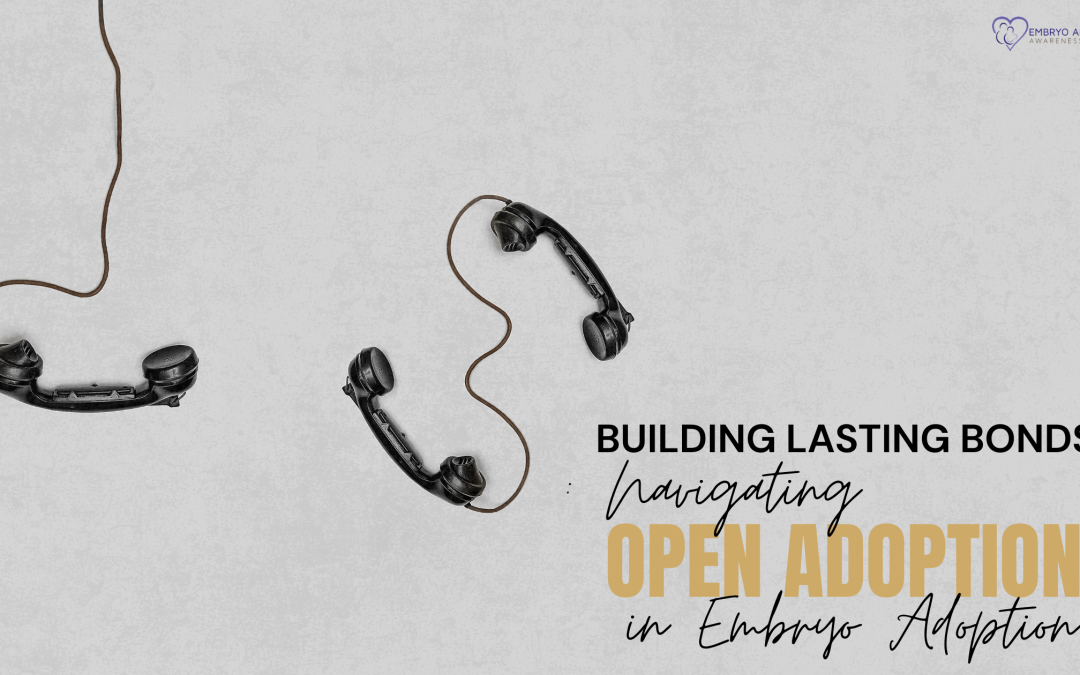Choosing open adoption for your embryo adoption relationship is a beautiful choice. Not only will this be beneficial to the adoptive parents when any health-related or other questions come up, but you could build a true friendship and even an extended family relationship. With all the DNA technology out there, along with the research that has proven the benefits of these open relationships, it is one of the best decisions you can make for your adopted child, both as a placing family and as an adoptive family.
Once the embryos have arrived at their new clinic, and both families are eager to start connecting, the question can come up of, “How does this relationship start?”
The old saying “Rome wasn’t built in a day” certainly applies in building a relationship with your placing or adoptive family. Even the very best of friends did not meet and immediately become BFFs. It took time for them to get to know one another and find common interests. Even though there can be an added element of pressure to start a great relationship for the sake of the children involved, it is important not to force it and let things happen naturally. Both parties are experiencing many emotions through this process, so be patient and understanding as you navigate this journey together.
You and the other family have decided by what means you will communicate, but how do you initially navigate the relationship?
It is important to start the relationship just as if you were approaching a new friend or even dating. You know some about them from reading their family profile and maybe have some similarities there that you can discuss – perhaps hobbies or vacation spots. Finding common ground on items to discuss will help grow your relationship and make it more natural to share transfer updates, as opposed to following the contract obligation.
In making friends, you also do not ask to hang out the second after you have introduced yourself, as that might scare them away. It takes time to get to know someone before you feel comfortable going to their house, or even to dinner. It is important not to rush the relationship with the placing or adoptive family.
As previously mentioned, there are many different emotions that can come up from both sides during this process, and it can take time to navigate them. Be respectful and understanding of where the other party is coming from during such a sensitive time. Show them your support and let them know that you are there for them on this journey, but do not force expectations on the party so early on. It is best to let the relationship evolve naturally and grow with each party feeling comfortable in the rate of growth.
Some relationships may start as obligatory, sending required updates about transfers and pregnancies, and that is okay!
No two relationships are going to look alike or evolve the same way and at the same speed. The important thing is to keep the line of communication open, offer support, and make sure that you, as well as the other party, are comfortable with where your communication is. Once pregnancy has been achieved, relationships tend to grow. Maybe the adoptive couple has questions about the placing mother’s pregnancies, or the placing mother has advice to share. Just because your relationship may start slowly does not mean that it will never change.
It can be nerve-wracking when considering communication in open adoptions, particularly in embryo adoption. The placing families do not want to step on the adoptive family’s toes, and the adoptive family may be hesitant to build up a relationship if the transfers are not successful. Though both parties want the same thing, it can be difficult to see when clouded by the emotions of the situation. Remember that good relationships take time to grow. If you need a stepping-off point, refer to the family profile for some similarities that made you say yes to the match initially. Make sure that you, as well as the family you are matched with, are comfortable with your level of communication, and rest in the fact that slow and steady does win the race in a lifelong relationship between adoptive and placing families.
To learn more about embryo adoption or donation, visit EmbryoAdoption.org.


Recent Comments